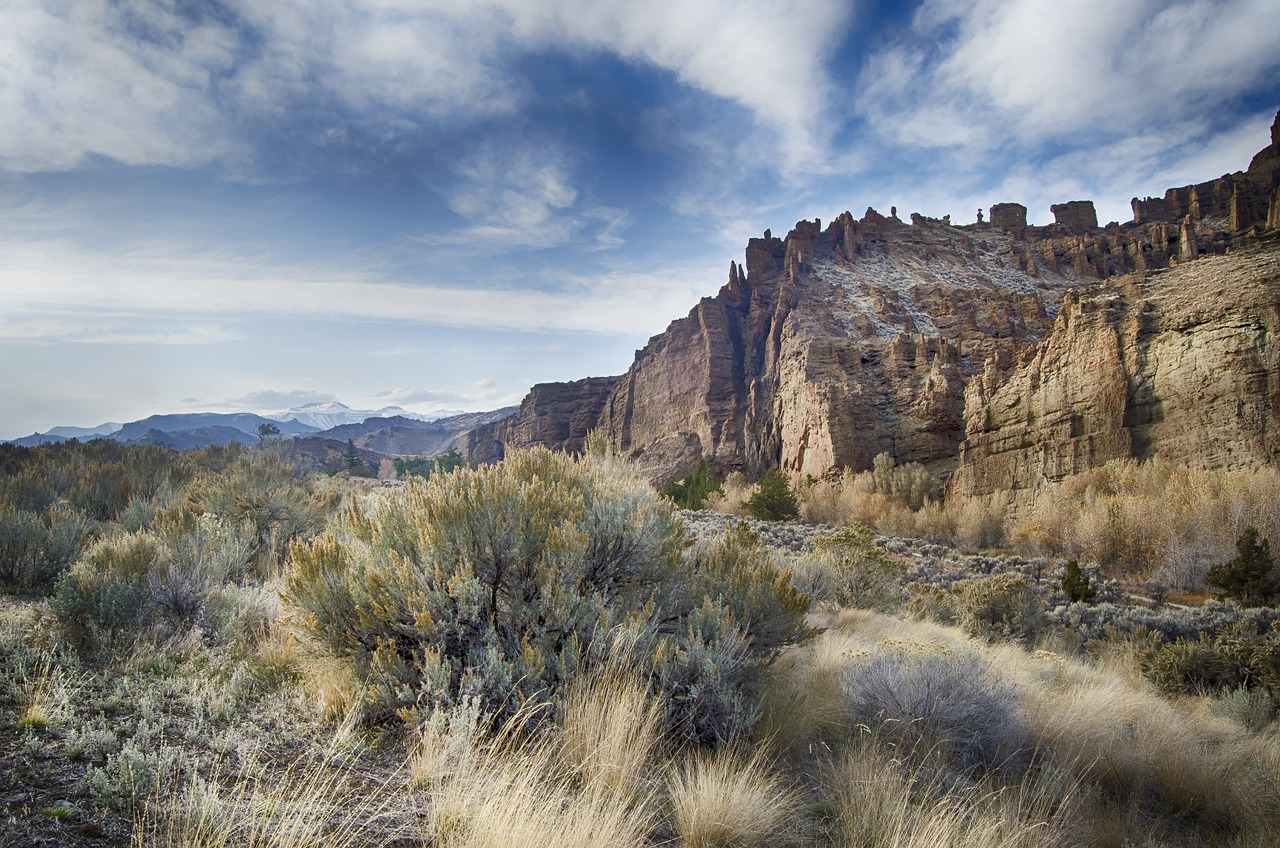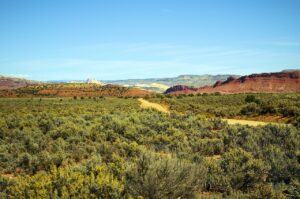Sagebrush
Nicolas Duval
·
·
Overview
Sagebrush, primarily the Artemisia tridentata, is an aromatic herb endemic to North America’s semi-arid regions. Its traditional uses span medicinal to ceremonial and it contains compounds like flavonoids and camphor. Though not commonly smoked due to potential health risks, sagebrush holds a significant place in indigenous culture and natural medicine.
Common name(s): Commonly known as wild sage, big sagebrush, great basin sagebrush, and desert sage.
Scientific name: Artemisia tridentata

Characteristics
Known for its aromatic qualities, resilience in arid conditions, and traditional medicinal uses by indigenous cultures.
Region
Sagebrush typically grows in the Intermountain West of North America, in arid and semi-arid conditions such as cold deserts, steppes, and mountainous regions.
Natural Habitat
Arid and semi-arid conditions such as cold deserts, steppes, and mountain habitats.
Cultivation
Prefers full sun, low to moderate water, and well-drained soils, tolerating a range of soil types including sandy, loamy, and clay.
Traditional Usage
Sagebrush serves as more than just an aromatic shrub; it has a place in traditional practices that highlight its versatility and value. Indigenous cultures have found multiple uses for this hardy plant, emphasizing its importance in their way of life.
- Sagebrush has been used for medicinal applications, likely due to its active compounds that suggest anti-inflammatory and antibacterial properties.
- It plays a role in ceremonial rituals, where it might be used in purification processes or other spiritual activities.
- The plant has also served as a source of fuel, exhibiting its practical utility in everyday tasks.
- Additionally, the hardiness of sagebrush has made it a suitable material for construction, helping to support the infrastructure of indigenous habitations.
Understanding and respecting traditional uses provides a window into the cultural significance of sagebrush, acknowledging its historical value as much more than a simple shrub.
Historical Usage
Used traditionally by indigenous peoples for medicine, ceremonies, fuel, and construction.
Common Usage
Currently utilized for herbal remedies and ceremonial purposes.
Effects
Sagebrush is known for its aromatic qualities and has been traditionally valued for a variety of purposes. When used in medicinal contexts, people have reported experiencing several general effects. Below is a summary of those effects:
- It may help alleviate digestive issues, providing some relief for stomach discomfort.
- Acting as an expectorant, it could potentially aid in clearing the respiratory tract.
- The presence of anti-inflammatory properties might contribute to reducing inflammation in various parts of the body.
- As an herb with antifungal and antibacterial compounds, sagebrush might be beneficial in fighting certain infections.
Though these effects suggest various health benefits, it’s important to note that evidence substantiating the medicinal use of sagebrush is still lacking. More rigorous scientific research is needed to confirm its efficacy and safety. Those considering using sagebrush for its potential benefits should consult a healthcare professional, especially since it can interact with other medications and carry the risk of allergic reactions. Additionally, it is vital to consider individual health conditions and possible respiratory risks before using the herb in any form.

Sagebrush landscapes play a critical role in supporting wildlife and maintaining ecological balance in arid regions.
Effects when smoking
When considering the effects of smoking sagebrush, it’s vital to exercise caution as there is a dearth of scientific literature comprehensively assessing its impact in this form. Here’s what is generally understood about smoking sagebrush:
- There is a lack of evidence to clearly define the effects of smoking sagebrush.
- Plants in the Artemisia genus, including sagebrush, may contain compounds that are biologically active, but there is little information on what happens when these are inhaled as smoke.
- Traditional uses of sagebrush do not typically include smoking, hence there are no established guidelines or techniques for such practices.
- As with many herbs, sagebrush is aromatic—its earthy scent is comparable to that of common sage—but this does not imply that it should be smoked.
- Potential risks include respiratory issues and allergic reactions, emphasizing the need for caution.
- It is necessary to consult with a healthcare provider before considering the use of sagebrush, particularly in non-traditional ways like smoking.
The plant remains unregulated and legal to possess; its historical and cultural significance is a testament to its traditional applications. Always prioritize safety by being informed and considering the potential health implications of smoking herbs like sagebrush12.
Flavor Profile
Strong and aromatic, reminiscent of common sage with earthy notes.
Edible Parts
This plant is not known to be edible.
Effects when Smoked
The specific effects when smoked are not well-documented, with caution advised due to potential respiratory risks.
User Experiences
User experiences with sagebrush are largely anecdotal, with some individuals using it for herbal remedies, but experiences with smoking it are uncommon and not well-documented.
Medicinal Benefits
Sagebrush is recognized for its aromatic properties and has been a part of traditional herbal practices for generations. This shrub is known to contain several active components that propose various health benefits. Below is a list of potential medicinal advantages of sagebrush:
- Anti-inflammatory properties: May aid in reducing inflammation, potentially providing relief from conditions such as arthritis1.
- Antifungal and antibacterial: Sagebrush’s compounds could help combat certain bacterial and fungal infections1.
- Digestive relief: Although scientific backing is limited, sagebrush has been used to help ease digestive problems.
- Respiratory aid: Traditionally it has been used as an expectorant for some respiratory issues.
It is important to note that the safety profile of consuming or smoking sagebrush has not been well studied. Always consult with a healthcare professional before using herbal remedies to understand potential risks and interactions.
History and Folklore
Historically, sagebrush has played a pivotal role in the lives of Native American tribes. This versatile plant was not only used for medicinal purposes but also held a place in ceremonial rituals. Beyond its health-related applications, sagebrush served as a valuable resource for fuel and construction materials. Its historical significance is evidence of its multifaceted importance in traditional practices and the daily lives of indigenous cultures.
As a bridge between practical usage and spiritual significance, sagebrush has cemented its place in history as a plant of considerable worth.

An expanse of sagebrush, an integral plant in Native American history known for its medicinal, ceremonial, and practical uses in traditional indigenous cultures.
Side Effects and Contraindications
- Respiratory Issues: Smoking sagebrush may lead to respiratory complications. It’s essential to be mindful of the potential for breathing problems, as inhaling smoke from any plant can irritate the lungs.
- Allergic Reactions: Some individuals may experience allergies when exposed to sagebrush, especially if they have sensitivities to plants in the Asteraceae family.
- Drug Interactions: Chemicals found in sagebrush might interact negatively with certain medications. Before incorporating sagebrush into your routine, consulting a healthcare provider is advisable to prevent adverse reactions.
- Not FDA Approved: Remember, sagebrush is not sanctioned by the FDA for medicinal use. This emphasizes the importance of exercising caution and seeking professional guidance before use.
Please be aware that each person’s reaction to herbs can vary, and just because an herb is natural does not guarantee it is safe for everyone. Always prioritize your well-being and seek expert advice before exploring new herbal practices.
Legal Status
Sagebrush is legal to possess and use in the United States, as it is not classified under any controlled substances laws. There are no restrictions on the ownership or personal use of this herb. Despite its legality, it is worth noting that sagebrush has not been approved by the FDA for any medicinal purposes 1. Always make sure to stay informed about your regional laws, as regulations can change and may vary from one area to another.
References
1. Artemisia tridentata – Wikipedia, https://en.wikipedia.org/wiki/Artemisia_tridentata
2. Artemisia californica – Wikipedia, https://en.wikipedia.org/wiki/Artemisia_californica
3. USDA Plants Database, https://plants.usda.gov/home/plantProfile?symbol=ARCA13
Nicolas Duval
Nicolas is a passionate advocate for nature and the art of wildcrafting. His dedication shines through in Wildcraftia, a website he meticulously crafted to serve as a haven for nature enthusiasts worldwide. Driven by a deep appreciation for nature’s connection to humanity, Nicolas embarked on his journey in 2011 with SmokableHerbs, a platform showcasing his love for nature’s bounty. Building upon this foundation, he established Smokably, a thriving online store offering premium herbs and blends to a global audience.
